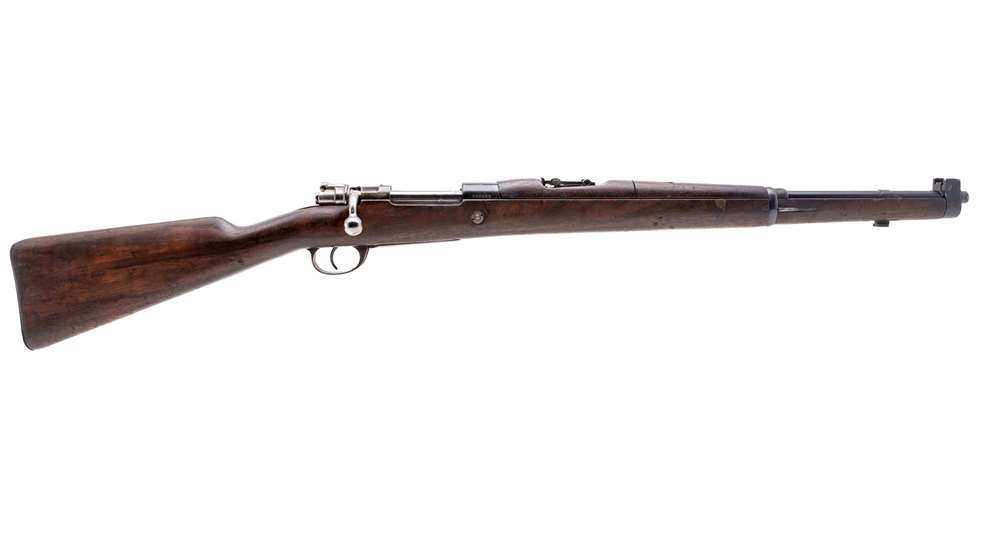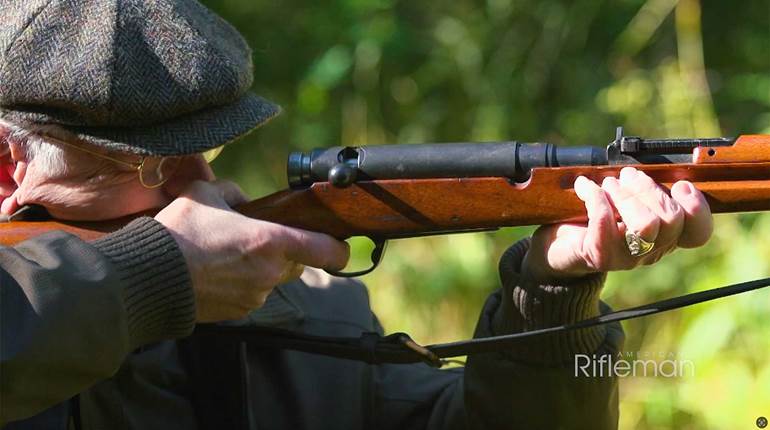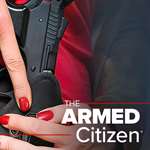
Gun: Model 1909/47 Mauser Carbine
Manufacturer: Fabrica Militar de Armas Portatiles
Chambering: 7.65×53 mm Mauser
Manufactured: 1947
Condition: NRA Excellent (Modern Gun Standards)
Value: $950
While the Model 1891 Argentine Mauser was an innovative and successful rifle, the Spanish Model 1893 and then, ultimately, the German Gewehr 1898 introduced improvements that, by 1908, Argentina wanted as well. Toward that end, the government in Buenos Aires established a second Technical Arms Commission to Europe on Jan. 5, 1909, and appointed Gen. Juan Felipe Duclos its president. The First Technical Arms Commission to Europe had presided over a tedious and complex process as it customized the Mauser’s features to create the Model 1891. The second commission’s job would prove to be much more straightforward. General Duclos basically ordered a slightly modified 7.65x53 mm Gewehr 1898 incorporating the various functional and safety improvements introduced after 1893—the cock-on-open bolt, non-rotating extractor, gas-relief holes and safety lug, as well as the stripper-clip-fed, five-shot, double-stack/alternate-feed internal magazine. Thus, after fewer than 20 years of service, the first Mauser Modelo Argentino was on its way out and a new one was on its way in, but the new rifle’s service life would stretch far beyond that of its predecessor.
Between November 1909 and May 1912, Deutsche Waffen-und Munitionsfabriken Aktiengesellschaft delivered 210,000 examples of the new Argentine Mauser, most of which were full-length rifle models equipped with a 29" barrel. In addition to full-length rifles, Argentina also ordered 30,000 examples of a cavalry carbine with a 21.9" barrel, a rear-sight assembly with graduations out to 1,400 meters and a turned-down bolt handle. Initially, these guns were not equipped with a bayonet lug, but eventually they, too, were modified to accept the Model 1891 sword bayonet. That was not done until after World War I—the historical event that would forever change the Argentine Model 1909 Mauser story. Between the mobilizations of August 1914 and the armistice of November 1918, Argentina could not order guns or ammunition from Deutsche Waffen-und Munitionsfabriken. This made the Argentine government choose a path that eventually led to the establishment of domestic production.
Although the global economic crisis of the late 1920s delayed it by nearly 20 years, domestic production of the Model 1909 Mauser was eventually established by the Direccion General de Fabricaciones Militares (or DGFM—“the General Directorate of Military Manufacturing”) at its Fabrica Militar de Armas Portatiles (or FMAP—“Military Small Arms Factory”) in Rosario, just 200 miles upriver from Buenos Aires. By that time, warfare had fundamentally changed, and there was no longer a need for a military service rifle with a 29" barrel. Engagement distances during the Second World War were much more modest than they had been during the first, and the widespread use of mechanized fighting forces meant that a carbine-length barrel offered greater practicality and flexibility.
This takeaway from World War II combat was recognized in Buenos Aires, and, because of it, the DGFM elected to produce the carbine only. Therefore, the version of the 1909 Mauser that went into production at the FMAP in 1947 was much like the old Model 1909 cavalry carbine that DWM had made for the Argentine government before World War I broke out. The only difference is that, from the start, the DGFM 1909 Mauser Carbine also incorporated the bayonet-mounting modifications adopted in 1926. In the end, the DGFM produced 19,072 Model 1909/47 carbines, and they can still be found in great numbers at gun stores and gun shows across the country. When Argentina ultimately gave up the Model 1909 Mauser in favor of the FN FAL, it had served for half a century.


















![Auto[47]](/media/121jogez/auto-47.jpg?anchor=center&mode=crop&width=770&height=430&rnd=134090788010670000&quality=60)
![Auto[47]](/media/121jogez/auto-47.jpg?anchor=center&mode=crop&width=150&height=150&rnd=134090788010670000&quality=60)















